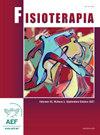Uso de ondas de choque radiales como cointervención en el manejo del síndrome de espalda fallida: un reporte de caso
Q4 Health Professions
引用次数: 0
Abstract
Background and objective
Failed back surgery syndrome (FBSS) is a complex condition characterized by persistent pain after spinal surgery. This study evaluates the effectiveness of radial shockwaves as a co-intervention in combination with conventional physiotherapy to improve pain and functionality in a case of FBSS.
Patient and method
A prospective, single-case study was conducted on a 62-year-old patient with pain and severe functional limitation, secondary to FBSS. During 14 sessions, manual therapy and therapeutic exercise were applied, incorporating radial shockwaves from the 5 th session onwards. These were administered in 2 phases: preparation (500 pulses at 1.5 bar and 14 Hz) and treatment (2000 pulses at 5 bar and 5 Hz), distributed bilaterally in the paravertebral musculature (T10-L5), quadratus lumborum, and painful points in the gluteal region. Pain was assessed using the visual analog scale, functionality with the Roland-Morris Questionnaire, and motor control with the modified Timed Up and Go test with accelerometer (inertial measurement unit).
Results
A total reduction in pain was observed (visual analog scale: 4.3 to 0) and an 81.25% improvement in functionality (Roland-Morris Questionnaire). The Timed Up and Go test reflected 24.67% less total time, an increase in step cadence, and a significant reduction in the sit-to-stand phase. The greatest changes coincided with the application of radial shockwaves.
Conclusion
Radial shockwaves, combined with physiotherapy, may be an effective co-intervention in the rehabilitation of patients with FBSS, optimizing the multimodal management of pain and functionality.
利用放射状冲击波协助管理背痛失败:案例报告
背景与目的脊柱手术失败综合征(FBSS)是一种以脊柱手术后持续疼痛为特征的复杂疾病。本研究评估了桡骨冲击波联合常规物理治疗改善FBSS患者疼痛和功能的有效性。患者和方法对一名继发于FBSS的62岁疼痛和严重功能限制患者进行了一项前瞻性单病例研究。在14次会议期间,应用了手工疗法和治疗性运动,从第5次会议开始纳入径向冲击波。这些药物分两个阶段给药:准备阶段(500次脉冲,1.5巴和14赫兹)和治疗阶段(2000次脉冲,5巴和5赫兹),分布在双侧椎旁肌肉组织(T10-L5)、腰方肌和臀区痛点。疼痛评估采用视觉模拟量表,功能评估采用Roland-Morris问卷,运动控制评估采用加速度计(惯性测量单元)改进的Timed Up and Go测试。结果观察到疼痛总减轻(视觉模拟评分:4.3 ~ 0),功能改善81.25% (Roland-Morris问卷)。Timed Up and Go测试反映出总时间减少了24.67%,步伐节奏增加,从坐到站阶段显著减少。最大的变化与径向冲击波的应用一致。结论放射冲击波联合物理治疗可能是FBSS患者康复的有效联合干预手段,可优化疼痛和功能的多模式管理。
本文章由计算机程序翻译,如有差异,请以英文原文为准。
求助全文
约1分钟内获得全文
求助全文
来源期刊

Fisioterapia
Health Professions-Physical Therapy, Sports Therapy and Rehabilitation
CiteScore
0.50
自引率
0.00%
发文量
37
期刊介绍:
Publicación Oficial de la Sociedad Española de Fisioterapeutas. Sus páginas ofrecen desde artículos originales hasta revisiones, pasando por el estudio de casos o los actos más importantes relacionados con la especialidad.
 求助内容:
求助内容: 应助结果提醒方式:
应助结果提醒方式:


